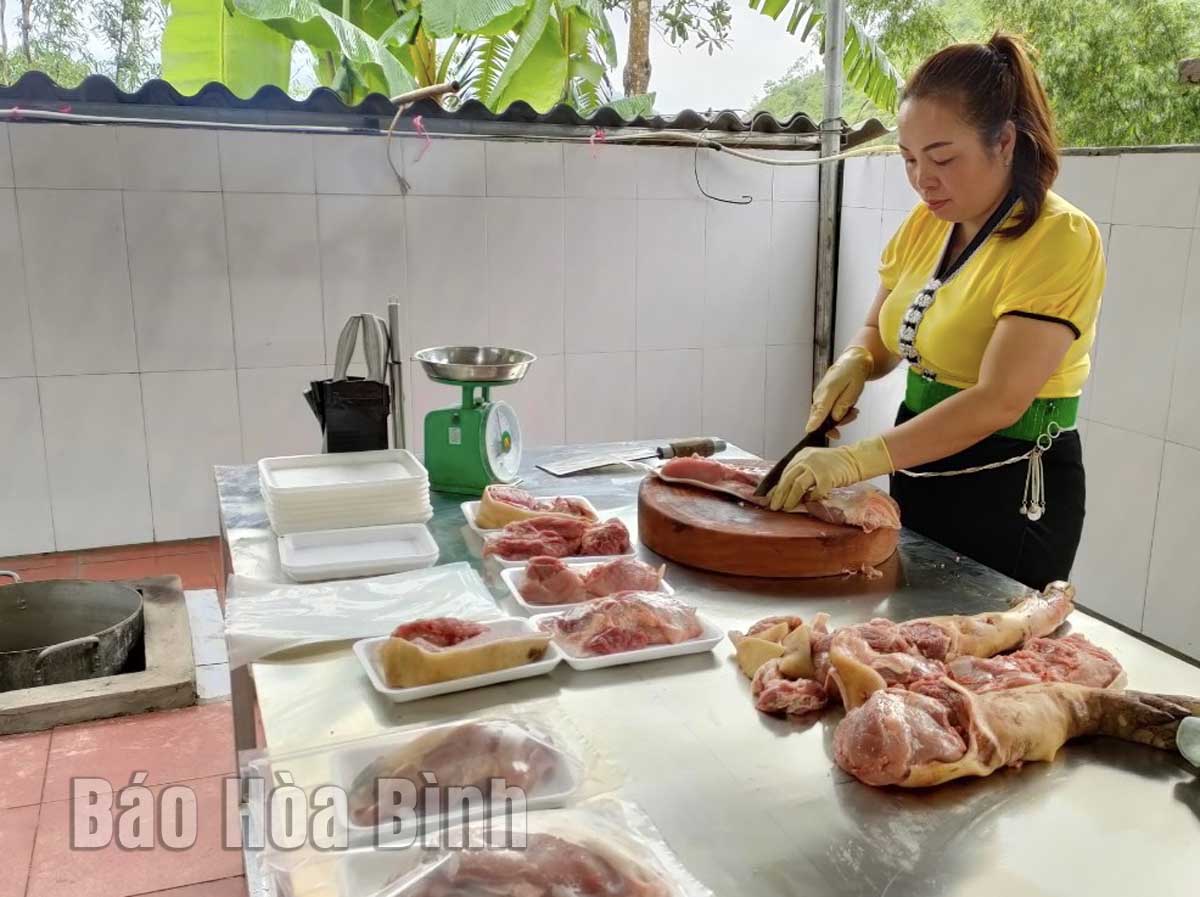
(HBO) – Tan Minh pork produced by Tam Cuong Tan Minh cooperative has been classified as a three-star product by Da Bac district’s OCOP (One Commune, One Product) assessment council. Currently, the cooperative is working to complete dossiers and improve product quality to prepare for the upcoming OCOP product classification at the provincial level in 2022.
Tan Minh
indigenous pork products by Tam Cuong Tan Minh cooperative in Da Bac district’s
Tan Minh commune are vacuum sealed to ensure food safety.
Tan Minh commune is home to many ethnic minority groups, including Tay, Muong
and Dao, with a unique culinary culture. The locality’s indigenous pork is used
in many dishes that are popular to local residents and tourists.
Ha Thi Tam, a local resident in Enh hamlet who has 17-year experience in
catering service, said that Tan Minh pork has special delicious taste.
Recognising the high demand for the product, her family has expanded the
selling channels to social networks like Zalo and Facebook, while forming the
Tam Cuong Tan Minh cooperative in August 2022 with 17 members to develop the
product.
Tam, who is also chairwoman and director of the cooperative, said that what
make Tan Minh pork different is the breeding technique of pigs and the precious
genetic source of local pigs. Tan Minh pigs are raised in almost a year. Their
main food is bananas mixed with corn, and cooked cassava. Therefore, native
pork has a fragrant, greasy but not fatty taste due to its characteristic fat.
Currently, the cooperative is raising 200 pigs. It has also coordinated with
local farmers to ensure the supply of the product.
In order to meet requirements of the OCOP programme, the cooperative has
invested in a spacious slaughterhouse system with preservation equipment and
vacuum machines to ensure that pork is always fresh, while ensuring the
traceability of the product. On average, each month, the cooperative sells
about 500kgs of pork at a retail price of 150,000 VND per kilo.
According to Tam, the cooperative is seeking the provincial OCOP status for the
product, which is expected to help expand its market and sales. The cooperative
hopes to foster collaboration with other black-skin pig raising cooperatives in
the province to form a production chain, ensuring the supply of the product to
all cities and provinces across the country, Tam added./.
The Standing Board of the Hoa Binh provincial Party Committee has agreed in principle on a proposal by the Standing Board of the Party Committee of Hoa Binh city to gather feedback on the city’s 1:2000 zoning plan, which forms part of its broader urban development strategy.
Hoa Binh province has made notable progress in public administration reform and digital government development, with the satisfaction index among citizens and businesses reaching over 84%, according to recent government evaluations.
Thanks to great efforts by local authorities in recent times, the governance and public administration performance of Mai Chau district has been significantly improved.
In the afternoon of June 6, the Party Committee, the People's Council, the People's Committee and the Fatherland Front of Lac Son district solemnly held a meeting to celebrate the 139th anniversary of the district's founding (1886–2025) and the 79th anniversary of the establishment of the district's Party Committee (1946–2025). There was the attendance of Mr. Bui Van Thang, the Vice Chairman of the Provincial People's Council; Mr. Quach Tat Liem, the Vice Chairman of the Provincial People's Committee; Ms. Dang Bich Ngoc, the Deputy Head of the National Assembly Delegation of the province; as well as the former leaders of the province and district through various periods, who are the natives of the district.
Implementing the Politburo’s Resolution No. 57-NQ/TW on breakthroughs in science – technology, innovation, and digital transformation is a golden opportunity for the northern mountainous province of Hoa Binh to renew growth model, improve competitive edge and shorten digital gap.
Resolution 57-NQ/TW, issued by the Politburo on December 22, 2024, identifies sci-tech, innovation, and digital transformation as strategic breakthroughs to build a developed and prosperous nation. In Hoa Binh province, this spirit is not just a slogan, it’s being put into action through concrete initiatives that form a "new development triangle”: digital citizenship, digital economy, and digital administration.



